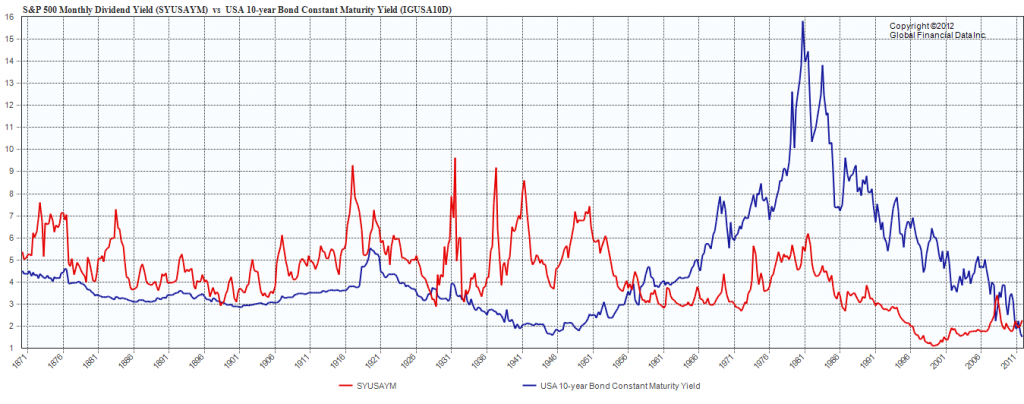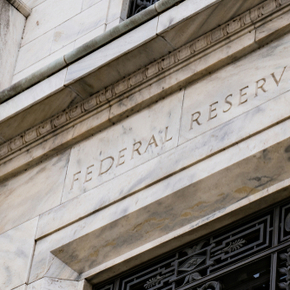Via Ralph Dillon at Global Financial Data, here’s a long term chart of the dividend yield on U.S. equities (in red) plotted against 10 year U.S. Treasury bond yield (in blue). Click for a much larger version:

There are always two factors at work behind each of these lines: on the one hand, the market price of the securities, and on the other, interest rates (for bonds) or dividend payouts (for stocks). Price and yield push against each other like two sides of a seesaw, but as on that playground board, the kids on each side can also kick themselves up (or weigh themselves down) independent of the action directly influencing them from the other side.
On the red line (dividend yield), you can see the jump in 2008 that was caused not by greatly increased corporate dividends, but rather by the market crash that sharply lowered equity prices. Dividend yields have now settled back down to around 2% as the market has rallied strongly over the past few years.
But what’s happened on the bond end is really extraordinary. A combination of record low interest rates due to the Fed’s loose monetary policy and a rush to safety that’s driven up the prices of Treasury bonds has driven the blue line down to record low territory. That we know, as well as the well-documented crossover of dividend yield above bond yields. But look what was happening with dividend yields the last time bond yields were this low (in the post-war period 1945-51). Dividend yields were then between 4-7%, a 2-5% spread from bond yields. Now, that spread is only about 0.5%.
In 1945 the market was clearly saying to yield oriented investors: buy stocks! And they did – the market rallied sharply during that period and right through 1956, driving dividend yields back down. But what is the market saying to yield oriented investors now?
HT: Ritholtz




